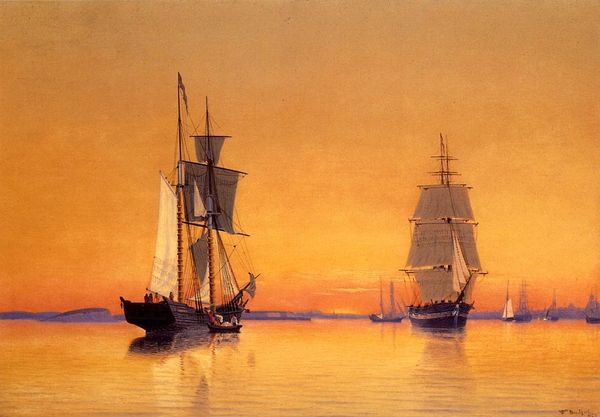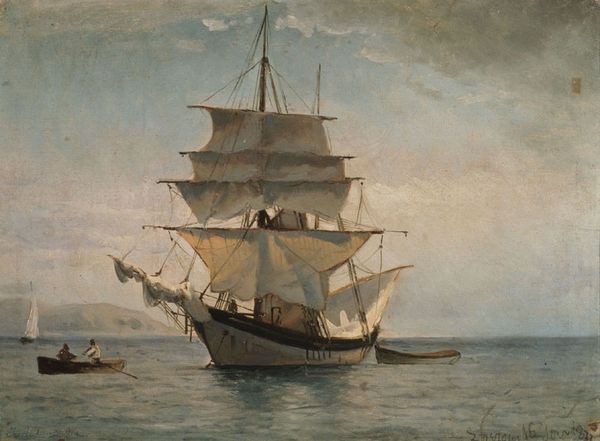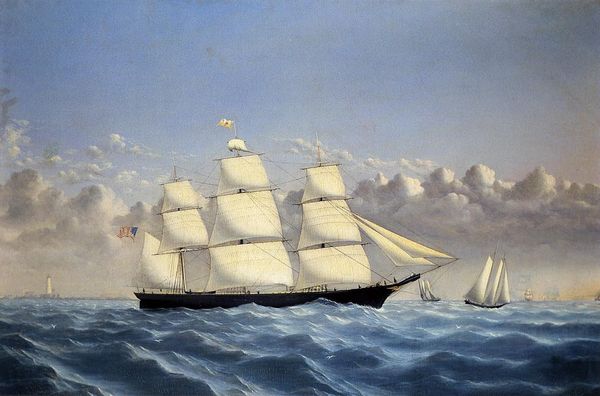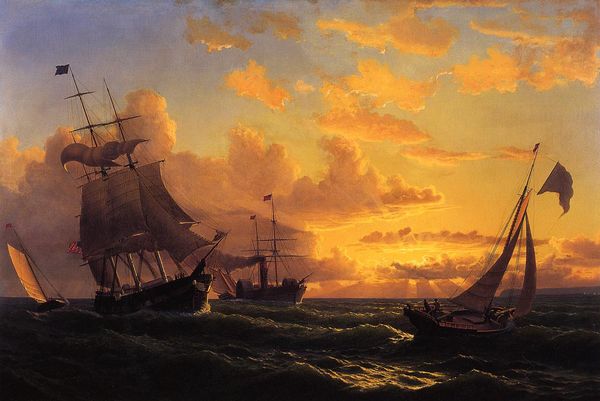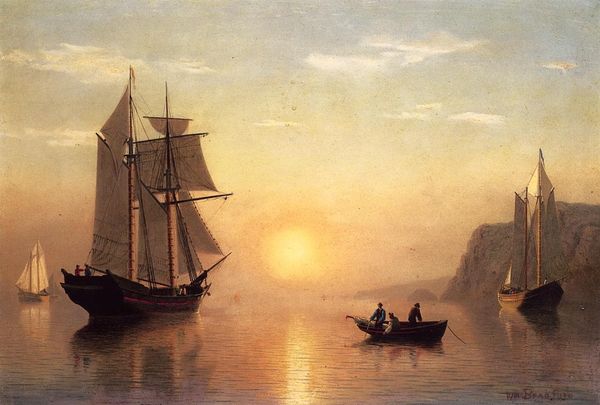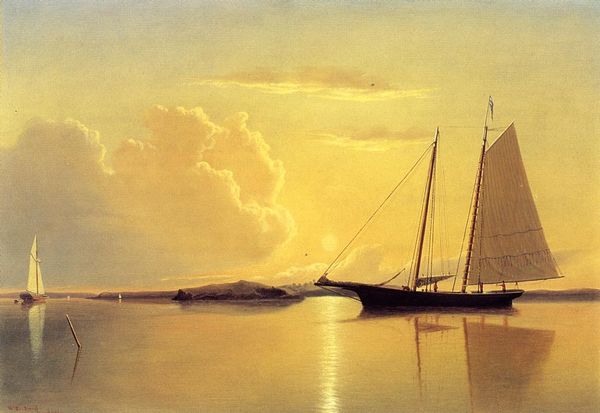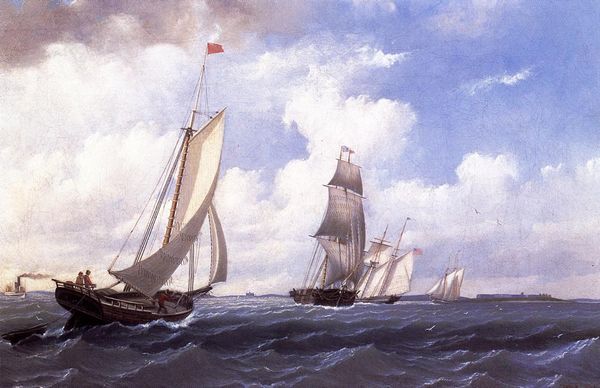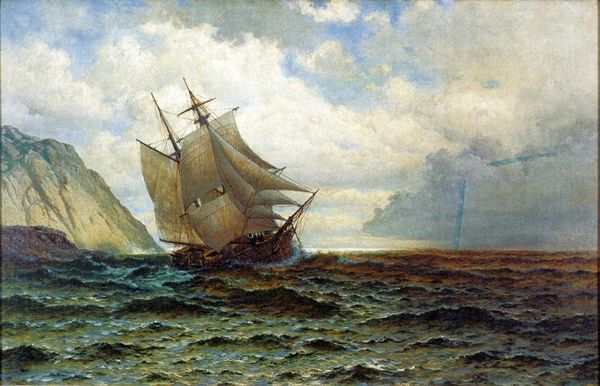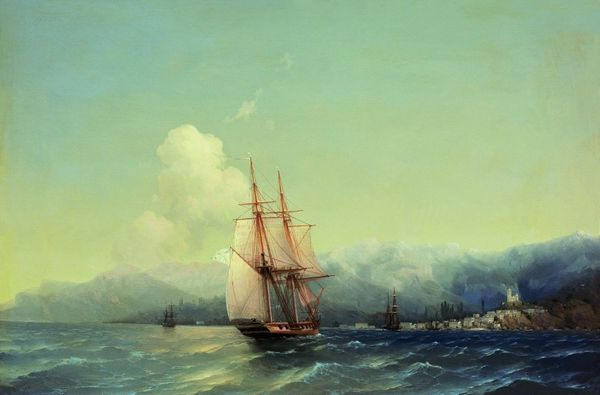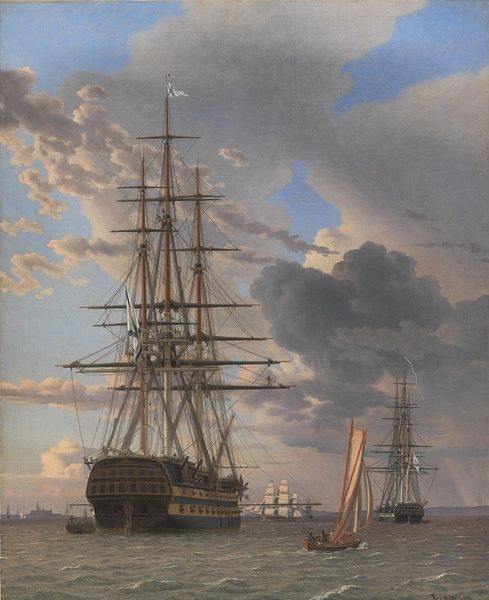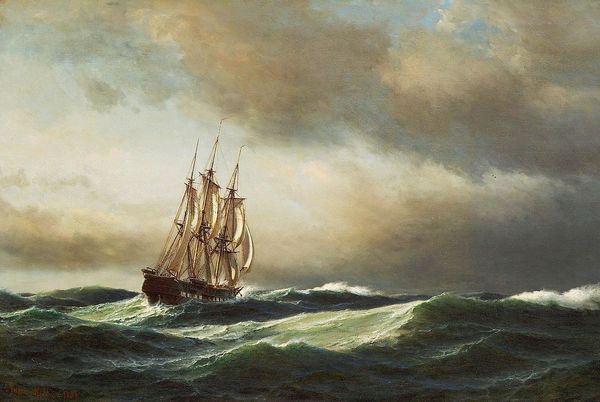
Copyright: Public domain
Curator: I'm struck by the stillness, that almost mirror-like surface of the water. There's such a deep calm radiating from this oil painting. Editor: Indeed. What we're looking at here is William Bradford’s “The Kennebec River, Waiting for Wind and Tide,” painted around 1860. Bradford, as part of the Hudson River School, had a real knack for capturing light, especially in maritime settings. But looking at this now, I wonder about that tranquility, given the social upheaval brewing during that period in American history. Curator: Absolutely. These ships, becalmed, feel almost symbolic. In various mythologies, water is deeply connected to cycles of life, death, and rebirth, which echoes in these ships waiting for wind; a potential for great journey. Consider, too, the luminosity; for Bradford, it was often more about conveying spiritual ideas rather than realistic portrayals. Editor: The reflective water certainly contributes to that otherworldliness. But, placing it in the context of 1860, it’s hard to ignore the fact that the US was teetering on the brink of Civil War. I wonder if this serenity served as a kind of escapism? Romanticizing nature perhaps offers solace when social realities become too difficult to bear. The composition almost becomes political by its deliberate omission. Curator: It could be argued. There is a longing in many luminist landscapes, perhaps here, too, it’s less escapism and more of a vision for an ideal future or yearning for a prelapsarian world, especially considering Bradford's Quaker background and how his work connects with deeper spiritual meaning. These aren't just boats but carriers of meaning, messengers between different realms. Editor: A vision that is intrinsically tied to the economic realities and inequalities of the time; what could these ‘messengers’ have actually represented during this particular moment? Thinking of those smooth reflective surfaces, they conceal what lies beneath, perhaps obscuring the exploitation inherent to maritime trade at that time? Curator: Interesting point, thinking about concealing exploitation—what a paradox within such luminously exposed surfaces! Perhaps that paradox offers an active invitation to uncover our own relationship to both the beautiful and potentially brutal currents that surround and underly us, today. Editor: It certainly highlights how much context shapes perception. An apparently peaceful image suddenly has so much more to say. Curator: Indeed, so much more depth than initially meets the eye.
Comments
No comments
Be the first to comment and join the conversation on the ultimate creative platform.
